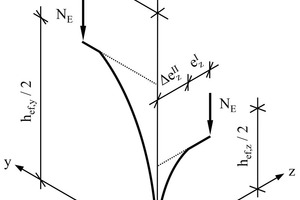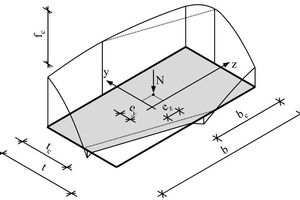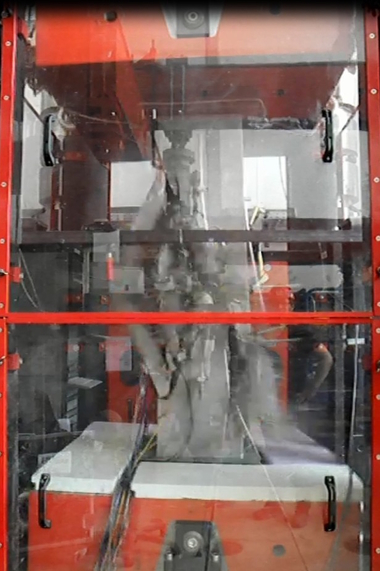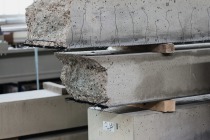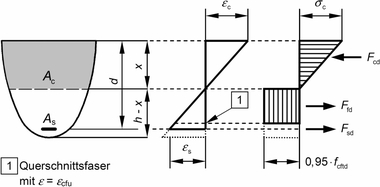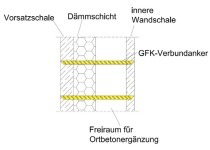Slender, non-reinforced compression members under biaxial eccentric loading
Compression members such as columns or walls are not only subjected to normal forces but also to bending moments resulting from rotations of adjacent structural components. If these rotations occur about two axes or if the members are subject to both uniaxial bending about the weak axis and horizontal bracing forces acting in the direction of the strong axis, the compression member experiences bending moments about two axis (biaxial bending). In construction practice, the use of unreinforced concrete compression members is often avoided because simple design methods exist only for a defined range of applications. For instance, DIN EN 1992-1-1 provides a simple design approach for compression members that are only subjected to uniaxial eccentric loading, whereas a simplified method for verifying the load-bearing capacity of structural components under biaxially eccentric loading is only specified within strictly defined boundaries. Beyond this scope, any structural verification requires complex non-linear numerical analyses.
To compensate for the abscence of simple rules for manual calculations, [1] uses moment-curvature relationships to derive a calculation model for the load-carrying capacity of compression members with linear-elastic material behavior, with and without considering flexural tensile strength. Furthermore, non-linear material behaviour of any type is considered in numerical analyses. Comprehensive comparative analyses and numerical calculations were performed to derive a practice-oriented design proposal that accurately describes the load-bearing capacity of unreinforced compression members. This proposal can be easily incorporated in the DIN EN 1992-1-1 standard and would thus make the existing limitations for application obsolete.

